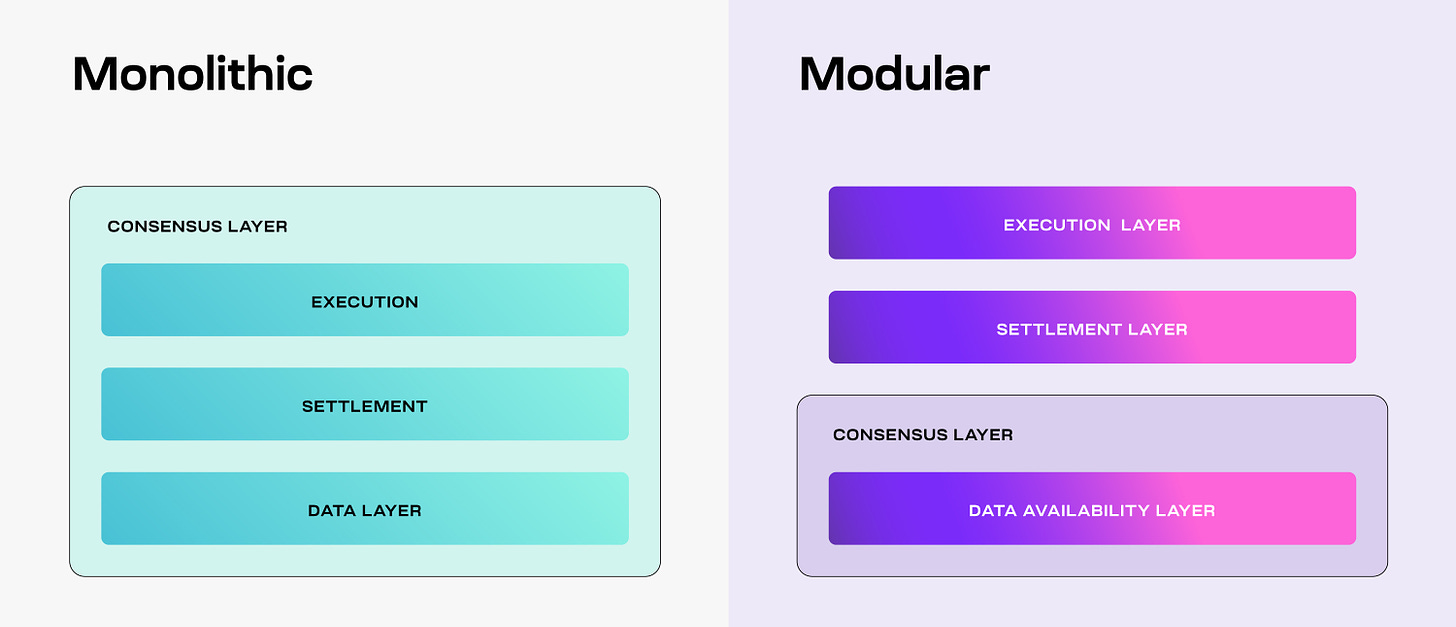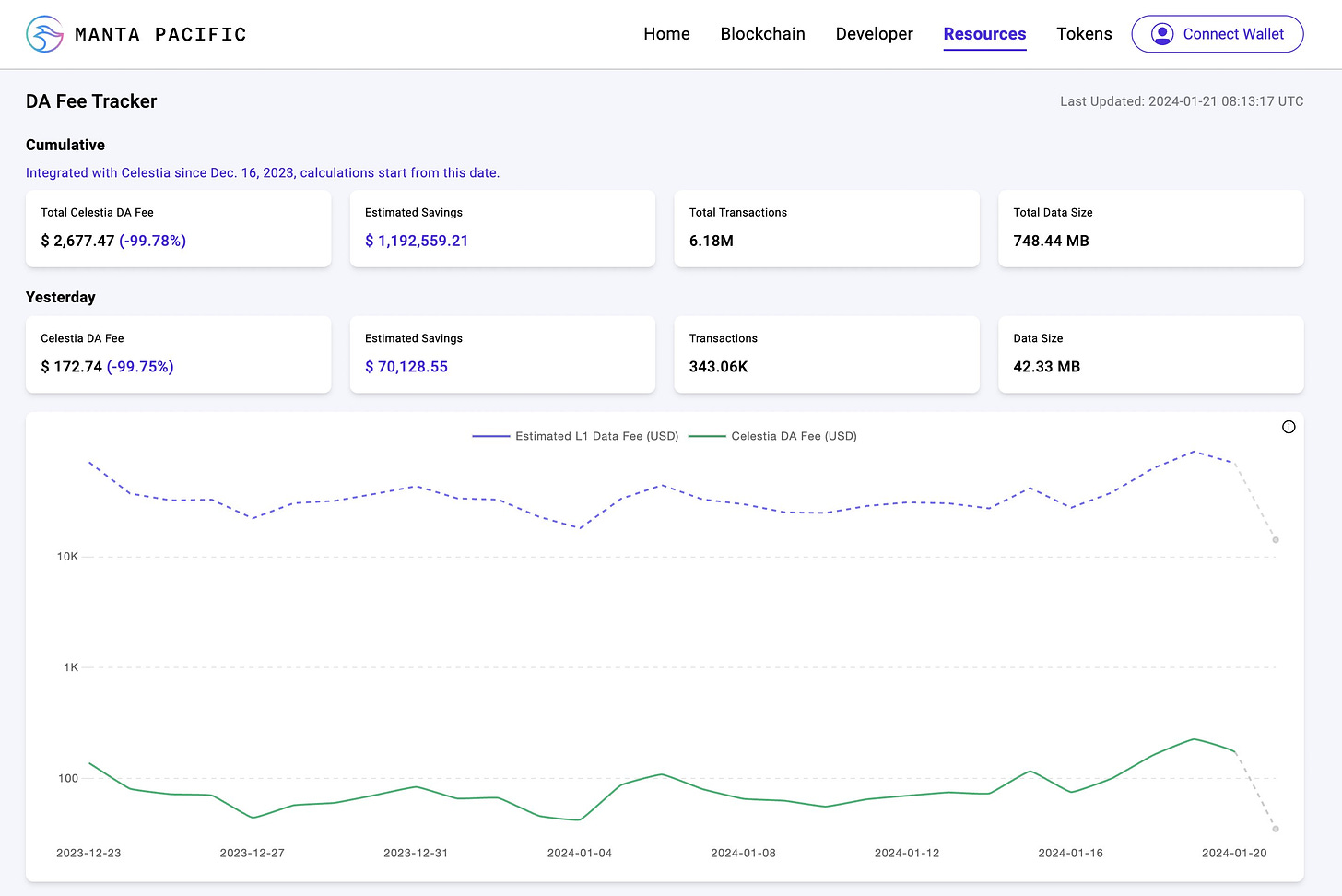- The Digital Investing Flywheel
- Posts
- Celestia's First-Mover Advantage in the Modularity Narrative
Celestia's First-Mover Advantage in the Modularity Narrative
Investment thesis for Celestia (TIA)

“The three only compelling baselayer innovations in blockchain are: 1. Bitcoin, 2. Ethereum and 3. Celestia.”
Celestia is a newly-launched modular blockchain that aims to provide data availability services to Ethereum rollups. It was launched on October 31, 2023, and its native token, TIA, was issued to 580,000 users as part of an airdrop. Since its launch, Celestia's TIA token has experienced a speculative rally, with a price appreciation of around $2.1 to $17.2 on 21 January 2024, a multiple of ~8.2x.
Is Celestia - even after a large price appreciation - still a good addition to your cryptocurrency portfolio?
This article will examine specific aspects of the token in the form of investment hypotheses (including risks), aiding you in the token assessment of Celestia.
Investment hypotheses
The following investment hypotheses summarizes the token assessment as follows:
Modularity narrative play
Celestia has a first-mover advantage in this narrative
Celestia offers a unique solution to the data availability (DA) problem
Airdrop flywheel: Airdrop value accrual for investors by simply staking the token
No selling pressure from insiders until the first cliff unlock on 30 Oct 2024
Modularity narrative

Modular blockchains are a new paradigm in blockchain design.
Instead of one monolithic blockchain doing everything (e.g., Bitcoin and Ethereum), Modular blockchains break the chain into smaller layers that can be combined, separating the different layers to provide enhanced transaction speed and scalability. By disaggregating the core components of a Layer 1 blockchain, modular blockchains can make 100x improvements on individual layers, resulting in a more scalable, composable, and decentralized system. This enables developers to build blockchain applications for mass adoption.
Celestia offers a more cost-effective solution for storing data compared to Ethereum, as it provides larger block space. This results in significant cost savings for users, as demonstrated by MantaNetwork, which saved over 99% in fees by using Celestia for Data Availability (DA) instead of Ethereum. These cost savings can be passed down to users, making Celestia a more affordable option for data storage.

The modular approach provides flexibility, scalability, and specialization, but it also increases complexity and requires inter-chain coordination.